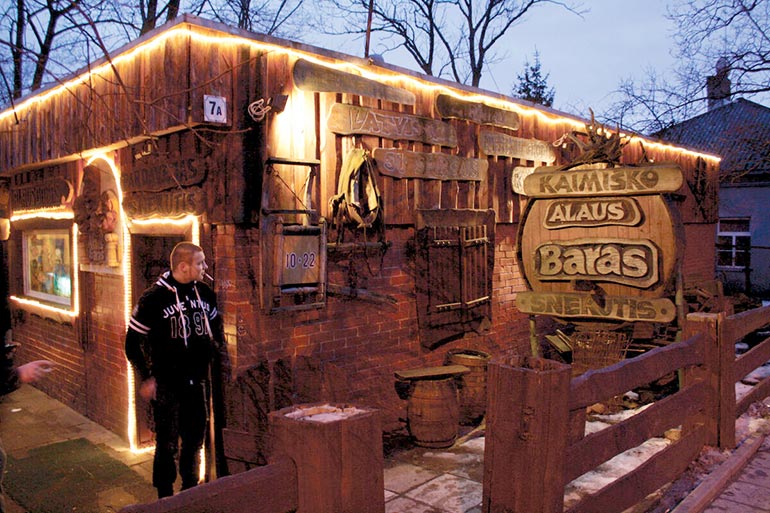In Lithuanian farmhouse brewing, beer is typically brewed in a large pot or cauldron over an open fire. The ingredients used in the Lithuanian beer brewing process include malted barley, hops, water and oftentimes never-before-seen yeast strains, as well as herbs, fruits and other rare local ingredients that are gathered from the surrounding countryside.
One of the key characteristics of Lithuanian farmhouse beer is its unique flavor profile. The beer is often sour or tart, with a slightly fruity or herbal taste that comes from the addition of local ingredients such as wild berries, juniper branches or spruce tips. Impressive maltiness comes through loud and clear in the form of date- or raisin-like elements. The beer is also often unfiltered and unpasteurized, which gives it a cloudy appearance and a distinctive texture.
Martin Thibault made the trek to the reclusive northeastern region of Lithuania to sample some of these nearly impossible-to-find but incredibly rewarding and flavorful brews.

The Journey Begins
After driving through empty stretches of flat land lined haphazardly with half-collapsed barns, passing by the odd town or city still surrounded by the concrete vestiges of communist rule, filled with aging populations still carrying strife on their curved backs and scarred foreheads, it is difficult to believe a real farmhouse brewing movement, promoting unpasteurized and unfiltered brews, is alive and well in Lithuania. Yet that is the conclusion one inevitably comes to after visiting many of the country’s quirky beer bars and countryside breweries and sampling its many delectable beers.
An old homebrewer from Biržai, the diminutive capital of Lithuanian beer culture, still buys his ingredients from a shop simply called “Apyniai, Salyklas” (Hops, Malt), close to a beer store named “Alus” (Beer), not far from a bar branded “Pilstomas Alus” (Draught Beer). Such is the poetry of marketing in these parts. This man is a gentle and generous brewer too, which is not necessarily traditional in reclusive northeastern Lithuania. Although most drinkers there will say real beer starts at eight percent alcohol, this homebrewer spares no grain for he has learned that every source of barley sugar is precious. His “trečiokas,” or third-running brew, was a tradition born of necessity, a question of survival for times when provisions were scarce. Still, this table beer he brews by force of habit is as beautifully earthy and herbal as his regular strength “alus.”